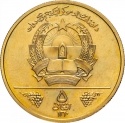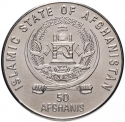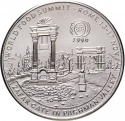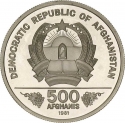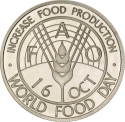You are about to finish your registration. Please check your mailbox (including spam folder). There should be a letter with a confirmation link. Check setting to make sure that your e-mail address is correct.
Send letter again
Obverse

|
Depicts rumah gadang surrounded by value ("100" above, Hundred Rupiah" below). BANK INDONESIA |
|---|---|
Reverse

|
Depicts a stylized globe and the tree of life (Indonesian ornamental design) divides date. Value below, inscription "Forest for Well-being" above. HUTAN UNTUK KESEJAHTERAAN |
| Edge |
100 Rupiah
Food and Agriculture Organization (FAO)
Forestry for Prosperity
Characteristics
| Type | Commemorative Issue (Circulating) |
| Material | Cupronickel |
| Weight | 7 g |
| Diameter | 28.5 mm |
| Thickness | 1.4 mm |
| Shape |
|
| Alignment | Medal |
Related coins
Food and Agriculture Organization (FAO)


